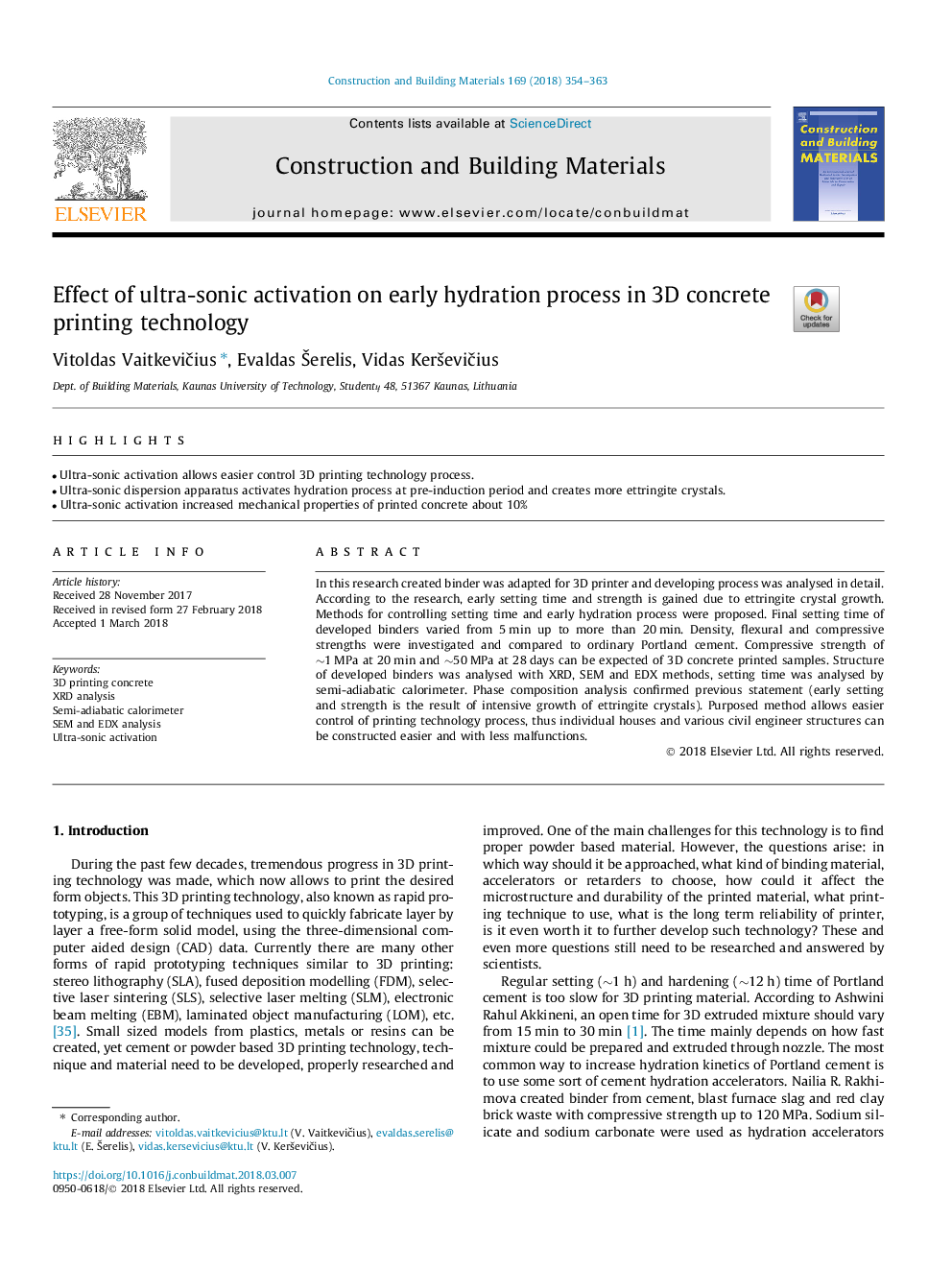| Article ID | Journal | Published Year | Pages | File Type |
|---|---|---|---|---|
| 6714513 | Construction and Building Materials | 2018 | 10 Pages |
Abstract
In this research created binder was adapted for 3D printer and developing process was analysed in detail. According to the research, early setting time and strength is gained due to ettringite crystal growth. Methods for controlling setting time and early hydration process were proposed. Final setting time of developed binders varied from 5â¯min up to more than 20â¯min. Density, flexural and compressive strengths were investigated and compared to ordinary Portland cement. Compressive strength of â¼1â¯MPa at 20â¯min and â¼50â¯MPa at 28â¯days can be expected of 3D concrete printed samples. Structure of developed binders was analysed with XRD, SEM and EDX methods, setting time was analysed by semi-adiabatic calorimeter. Phase composition analysis confirmed previous statement (early setting and strength is the result of intensive growth of ettringite crystals). Purposed method allows easier control of printing technology process, thus individual houses and various civil engineer structures can be constructed easier and with less malfunctions.
Keywords
Related Topics
Physical Sciences and Engineering
Engineering
Civil and Structural Engineering
Authors
Vitoldas VaitkeviÄius, Evaldas Å erelis, Vidas KerÅ¡eviÄius,
